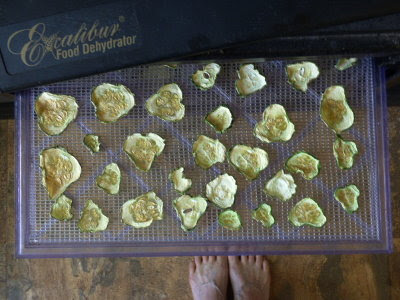 |
| I love my Kinder goats! |
Milk products are an important part of our diet, especially cheese and kefir. (Also ice cream!)
Milk production is highest during summer, so that's when I work on making as much cheese as possible for the upcoming winter months. Because I don't have a cheese cave, I've had to learn what cheeses I can make in a hot, humid climate, and how to preserve them for winter eating.
What's a cheese cave? Commonly it's a small refrigerator set between 45 to 58°F (7 to 14.5°C) and 80 to 98% humidity. These are the conditions necessary to properly age cheese. People often keep a small fridge like a wine cooler for this purpose. I've thought about getting one, but I honestly don't have the room for it. Instead, I've experimented with cheeses I can make without controlled aging. Here are the ones that are working well so far. The names of the cheeses are hyperlinked to directions for making them.
Mozzarella
Mozzarella is always first on my seasonal cheesemaking list. It's easy to make, requires no aging, freezes well, and is a
must for Friday night pizza! I grate it, measure it, and freeze it in freezer bags. Each bag contains enough for one pizza. These individual bags are stored inside a large paper grocery bag in the freezer.
Paneer
 |
| Paneer wrapped and ready for the freezer. |
I first made this for
fried cheese. Then we figured out it was great for snacking, for sandwiches, in eggs, and for added taste and texture in things like refried rice or spaghetti and meatballs. It is absolutely the easiest cheese in the world to make. Follow the link to learn how. The bonus is that it freezes well.
In the photo above you see my substitute for freezer paper. Freezer paper has really gone up in price, so I started wrapping things first in wax paper, then in a paper bag or packing paper.
Feta
Last year I learned to make feta and experimented with ways to keep it. This is a brined cheese, native to the Mediterranean area where caves for aging and storing cheese aren't readily available. Instead, it is aged and stored in a salt brine solution. The aging requires no special temperature, which means it can be done in a refrigerator. Those things make it a good cheese for my climate.
 |
| Feta curing for two weeks in brine. |
I made several batches last year and tried two ways to store it: some in brine and some with herbs in olive oil. The feta stored in brine gradually got saltier as time passed. It can be rinsed off in cool water, but what I really liked was the feta stored in herbed olive oil.
 |
| Crock of feta, rosemary and oregano sprigs in olive oil. |
The cheese kept a wonderful flavor and the oil's cheesy herb flavor makes it wonderful for
sauteing vegetables, for cooking eggs, as a salad dressing, as the oil in pizza dough, or as a dipping
oil with French bread. I'll make a couple of crocks-worth of feta in oil for winter eating.
Farmers (fresh) Cheese
 |
| Salting a Farmers Cheese |
For a harder cheese I've been making farmers cheese. It's mild, tasty, and meltier than paneer. Farmers cheese is meant to be eaten fresh, so I make as needed. However, this same basic cheese can be waxed or bandaged and aged for a
more flavorful hard cheese.
Aged Cheeses
Since aging (curing) a hard cheese requires a specific temperature and humidity range, that means waiting for autumn when our daytime temps drop to facilitate curing cheese. Last fall I
made one aged cheese,
Farmhouse Sage. It was fantastic, so I'm hoping to make a variety of aged cheeses this year.
The problem is that winter is usually the time the does are dried up in anticipation of spring kidding. So my goal is to have at least one doe in milk at all times of year. You can read more about that in my "
Year Around Milk" blog post. I'm planning to only breed two does this fall, and milk the other two throughout the winter. Plus, I have Ellie.
 |
| Hopefully Ellie has been bred for an October kidding. |
She is my first attempt at an early summer breeding for a fall kidding. For that, we're on wait-and-see status, because I haven't had her pregnancy confirmed. But if I can vary when kids arrive, then that will help with that year around milk supply. Year around milk supply will not only add variety to my cheese making, but also let me keep a year around supply of kefir and chèvre. These are examples of dairy products that can't be stored and so need to be made fresh.
Part of seasonal living is learning how to adapt to one's seasonal challenges. It takes a bit of trial and error, but in the long run it's well worth it.



















































